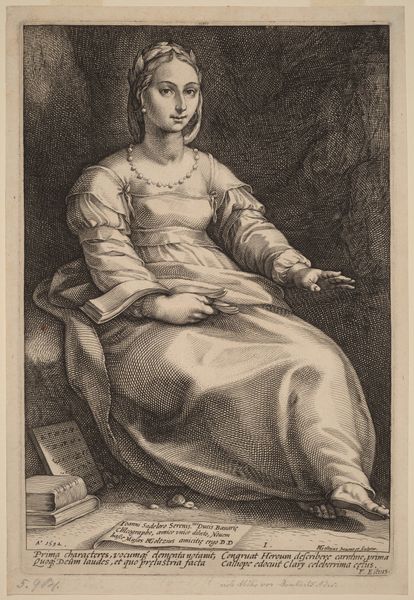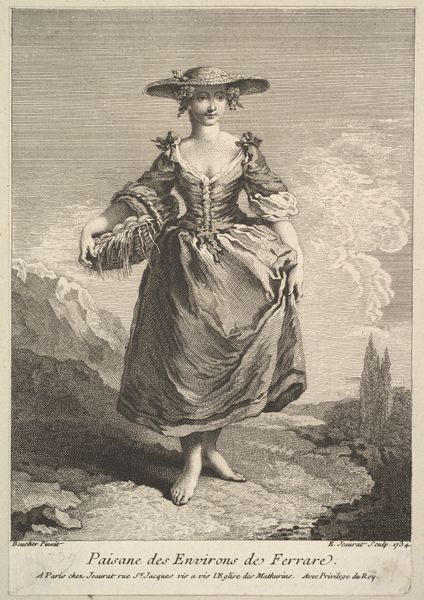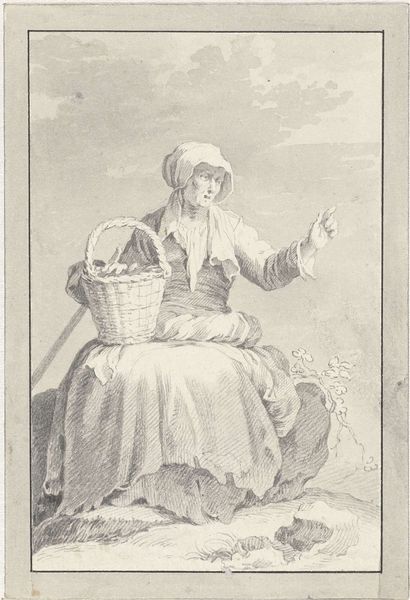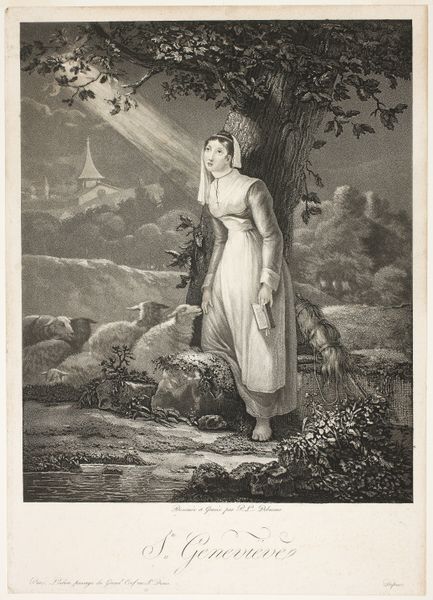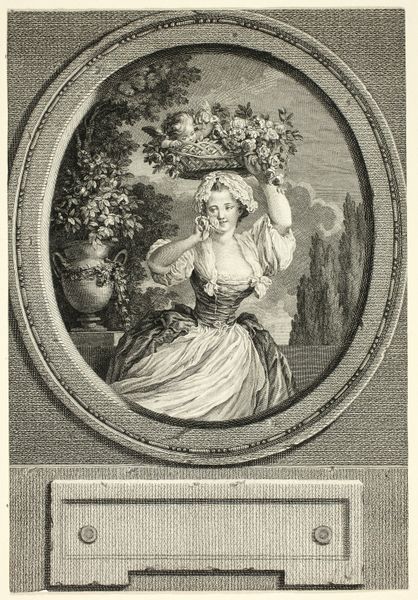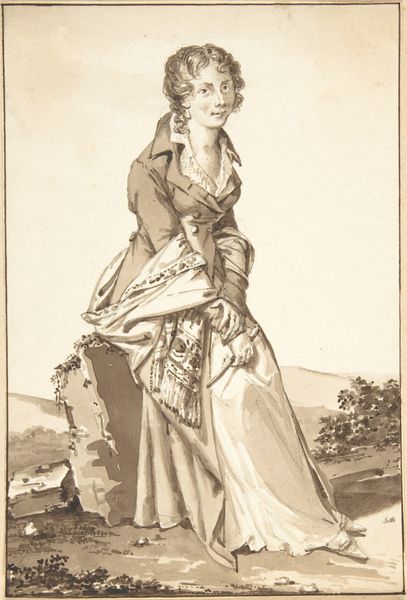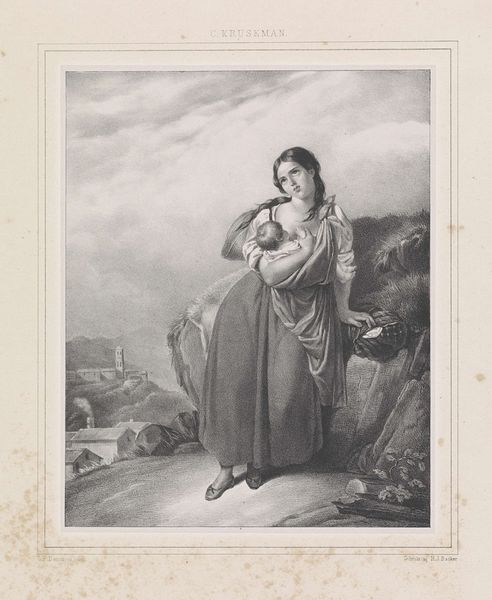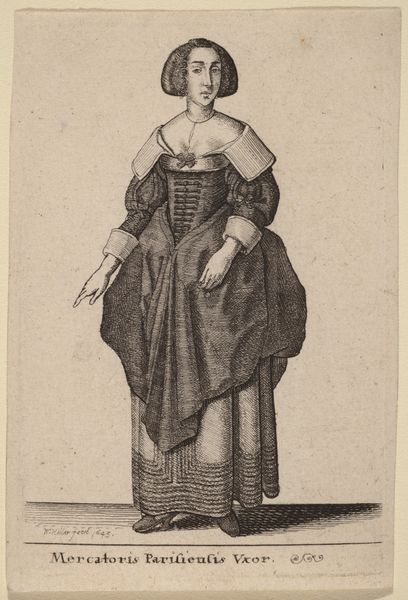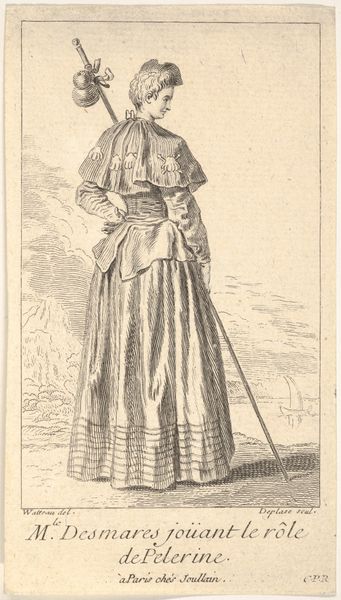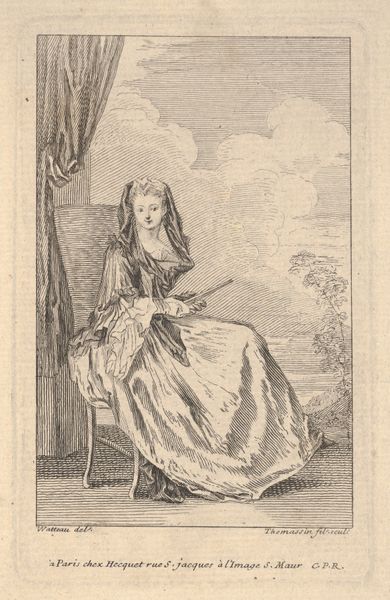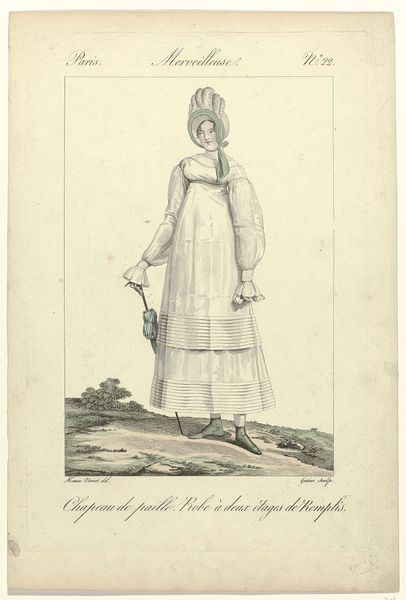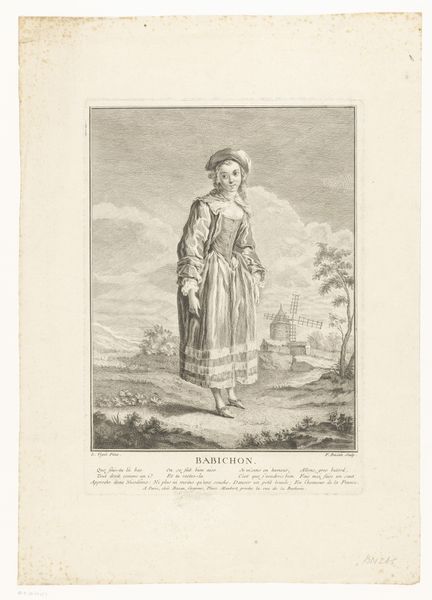
drawing, paper, ink
#
portrait
#
drawing
#
16_19th-century
#
landscape
#
charcoal drawing
#
paper
#
ink
#
romanticism
#
genre-painting
#
watercolor
Copyright: Public Domain
Curator: Welcome. Before us hangs an intriguing artwork from the Städel Museum collection titled "Italienerin am Meeresstrand." It depicts an Italian woman by the sea. Editor: It’s strikingly Romantic! The tonal gradations evoke a sense of quiet contemplation, even melancholy. I am struck by the deliberate, almost theatrical staging of the figure against that roiling sea. Curator: Indeed. Let’s consider the materials and the method of production. We appear to be viewing an exquisite combination of ink, charcoal, and watercolor on paper, indicating a layered and meticulous approach. This blending of media helps give the artwork an impressive tonal range. Editor: Thinking about production, one wonders about the role of travel and cultural exchange in its creation. Was this produced *in situ*, perhaps, capturing a specific moment? The material choices suggest portability, ideal for a traveling artist documenting landscapes and local figures. Who was she producing this work for? What was her relationship to the Italian woman featured? Curator: Excellent questions! If we return to considering the formal composition, note how the figure's verticality plays against the horizontal expanse of the sea and sky, which produces an unsettling dynamism within the frame. Further, the contrasts of light and shadow structure the narrative as surely as they model the figure’s form. Editor: And isn't the woman’s attire so specific? Her headdress, embroidered apron – these details suggest a focus on accurately recording aspects of traditional life and artisanal craft in coastal Italy, don’t they? The production values signal an interest in presenting tangible and geographically specific materials and visual cues. Curator: It’s an astute point. The texture created by the woven fabric provides further visual depth and enhances the surface qualities, drawing the eye to how the work creates a dialogue between realism and idealized form. Editor: Precisely. So, viewing it through this lens, the artwork is as much about the materials used as it is about the represented figure. I am now intrigued by the implicit narrative woven into the scene. Curator: I find that, by exploring its formal tensions, we see that the visual structures inform the conceptual frameworks within which such representations were—and are—received. Editor: And my emphasis on materiality urges an interrogation of production processes that might challenge or corroborate conventional definitions of artistry.
Comments
No comments
Be the first to comment and join the conversation on the ultimate creative platform.
